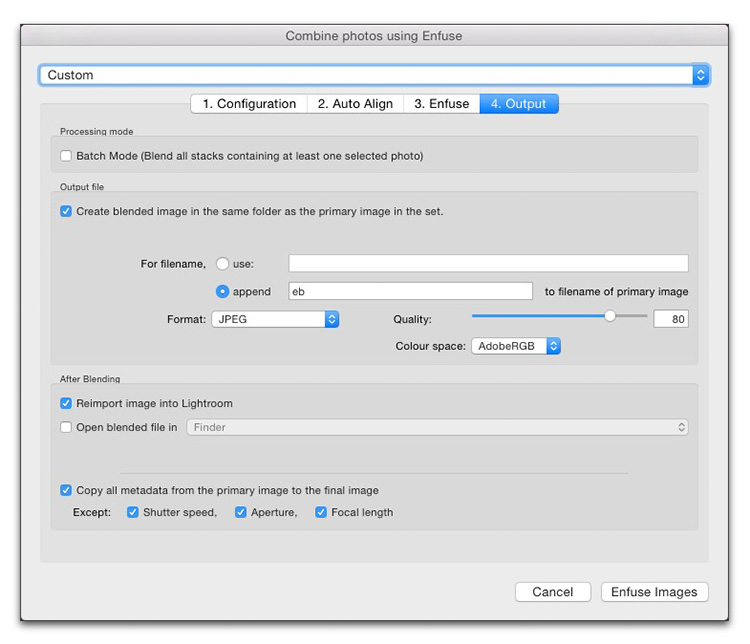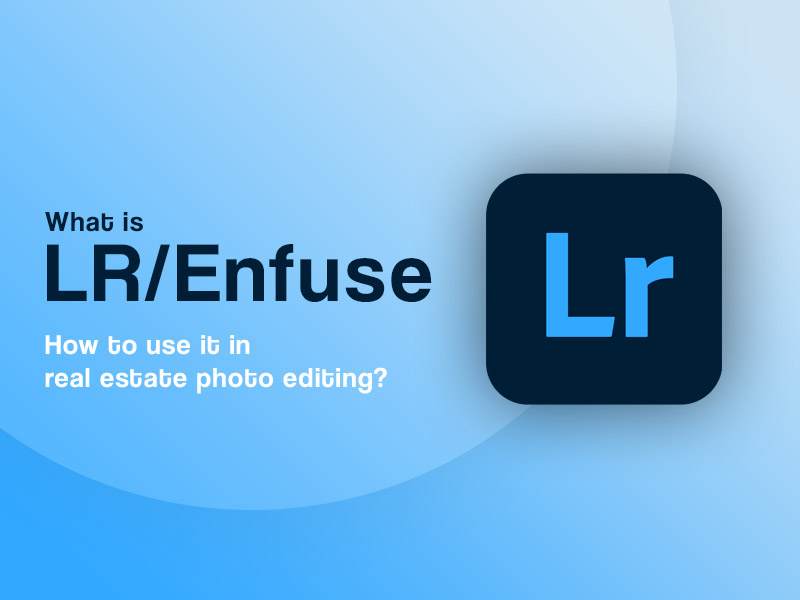Using LR/Enfuse or the Photomatix Pro Software The final step is to use a tool named LR/Enfuse. This tool blends all the exposures in the stack and creates a perfectly balanced image with a greater dynamic range than it is possible with a single frame. Here is his answer: I ran a comparison speed test of a five bracket sequence via LR/Enfuse and Photomatix both via their respective Lightroom plugins. Enfuse took just over one minute and Photomatix was about ten seconds faster! With Photomatix, you have to monitor the process as a secondary menu control panel appears once the bracketed images. A quick description of Plugin ENFUSE for LightRoom CC. LR/Enfuse provides a convenient interface onto the open source Enfuse application, which provides excellent blending of multiple exposures of the same scene into one final image. Simply select the images that need blending together and choose Blend Exposures Using LR/Enfuse from the File menu.
Hi gang – and howdy from Charlotte, North Carolina (here for my seminar today). So, last week I had Real Estate photographer Thomas Grubba as my guest on “The Grid” (our life weekly talk show for photographers), and he was talking about how he uses a Lightroom plug-in called:

“Enfuse”
A quick and easy way to use Enfuse for Lightroom and edit photos for real estate listings.
It’s from a developer in the UK, and it’s what Thomas uses to take his bracketed real estate photography images and merge them into a single image with a realistic look. He was really raving about it, so I tried it myself and it’s pretty amazing (most of the time). Best of all, it’s “Donationware” (there’s no set price – you give what you want to the developer).
Here’s a few quick results (no toning was done to any of these – just the initial merge, so you can do a lot to these examples. The first one will be Lightroom’s built-in “Merge to HDR” followed by the Enfuse plug-in.


Note: Ignore the ghosting – I didn’t address it in any of these examples.
Above:Lightroom’s Merge to HDR feature
Lightroom Enfuse Batch
Above:Same images merged using the “Enfuse” plug-in
Above:The same image with Lightroom Merge to HDR but with the AUTO TONE turned on.
Above:The Enfuse image with Auto Tone added.
Above:Lightroom’s Merge to HDR version.
Above:the same images merged in “Enfuse”
Above: Here’s what the plug-in looks like when it opens in Lightroom. 4 tabs along the top with different options for merging.
Most of the time, I seem to like the results from Enfuse better than Lightroom’s built-in (which I’ve been quite fond of, so that’s saying something), but there were a couple of images I merged where I liked the Lightroom native version better, but not many.
Thomas recommended added +20 Clarity and +10 Contrast two your HDR bracketed images before you Enfuse them, and he’s right — I think it produces a better result.
The only downside I’ve experienced thus far is that it’s quite a bit slower than Lightroom’s Merge to HDR, so you wait longer to see your result, especially with larger brackets of 5 or 7 images. Outside of that, it’s a peach.
Here’s a link to download Enfuse from the developer (be generous). 🙂
Hope you found that helpful.
One more thing…
In other news: Registration for the Photoshop World Orlando 2017 Conference officially opens today. You can read more about it on my blog at scottkelby.com or go to photoshopworld.com
I look forward to meeting a bunch of you here today! 🙂
Best,
-Scott

Reader Question: Can You Create Presets for ...

Lightroom Mobile Tip: Shooting Directly Into a ...
Related Posts
You may have seen the me mention this photo in a previous post. The shot is taken using ambient light only, and yet everything is well exposed from the forground table right through to the back of the room. Normally we would expect most of the room to fall into shadow due to the high constrast difference between the window-lit table and the shaded corridor; so how was this avoided?
Well, it was easy actually. I took several shots at different exposures and then blended them together directly from within Lightroom using my LR/Enfuse plugin.
Isn’t that the same as HDR?
Exposure blending essentially involves examing a group of photos with varying exposures and creating a final photo, pixel by pixel, by choosing the best exposed pixel from all of the photos.
Note that this is not the same as creating an HDR (high dynamic range) image. To create an HDR image several exposures are also used, but the similarity stops there. An HDR image uses 32 bits per pixel, and these bits are used to store a floating-point value. We don’t wish to delve into the technicalities, but the result is that an HDR image allows for each pixel to contain practically any exposure value, so if the difference between the the darkest and lightest parts of an image is 20 stops, this will be faithfully preserved in the HDR’s file format.
The difficulty comes when we need to display an HDR image on media that can’t display this high dynamic range, such as a screen or a sheet of paper. The dynamic range of the image needs to be compressed to fit within the dynamic range of the chosen media. Typically this is done by controlling a tone mapping curve that dictates how and where the dynamic range is compressed.
Are the end results of the two approaches the same? Well, sometimes they can be, but mostly they’re not. Here are the main differences:
- Blending software is very easy to use but it can only produce natural looking images.
- HDR software is more complex to use, but it’s possible to create all manor of ‘unnatural’ but often very interesting styles by playing with the tone curve.
- Most people find it very difficult to create natural looking images using HDR. We know we do.
So, for interior shots like the one above, where a natural looking image is paramount, blending is definitely the way to go. It’s quick and easy. However, to create the “HDR look” blending isn’t going to help.
Enfuse
Enfuse is an open source command line application that’s part of the Hugin project.
Enfuse produces fantastic results, but the command line interface made it quite painful to use. It would certainly be a barrier to most photographers. I therefore decided to write LR/Enfuse, a plugin that would allow photographers to use Enfuse directly from within Lightroom. It’s now easy to blend images by simply selecting them and then choosing the LR/Enfuse option from the menu.
Lr Enfuse 16 Bit Or 8 Bit
LR/Enfuse has seen several major improvements over its lifetime, including the ability to automatically align images that show a slight shift, the ability to preserve the image metadata (normally lost when using Enfuse) and, after great demand, the ability to batch process an entire shoot by grouping all the photos that will form a single image into single stack, then selecting all the stacks and calling LR/Enfuse.
A real life example
Lr/enfuse Download
So, let’s get back to the above photo to see a real life example. Here is the sequence of images that I took.
I selected them in Lightroom and then launched LR/Enfuse with the default settings, which created a new blended photo:
The blended image is often just a touch underexposed. This is no problem, we can now bring it back into Lightroom and develop it as normal. The final image shown at the top of this page is corrected for exposure and the white balance has been warmed to taste.